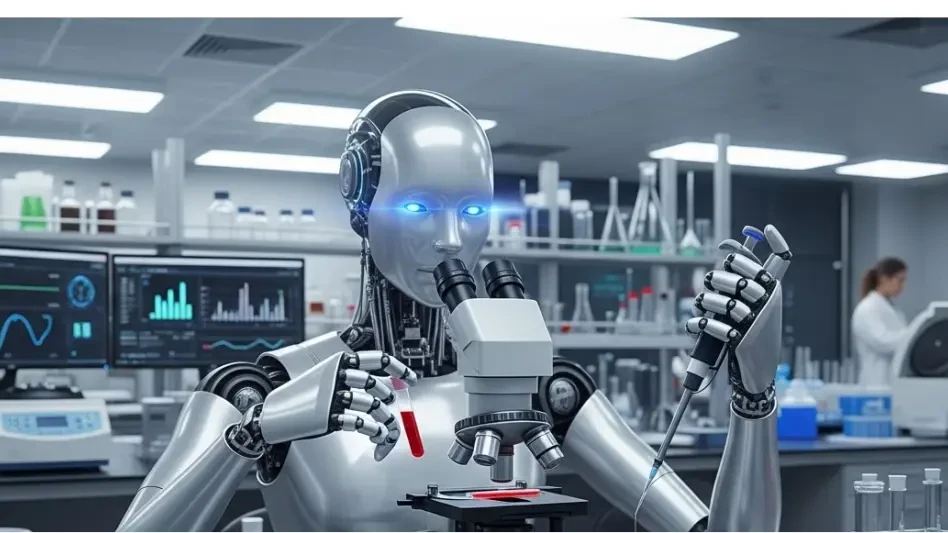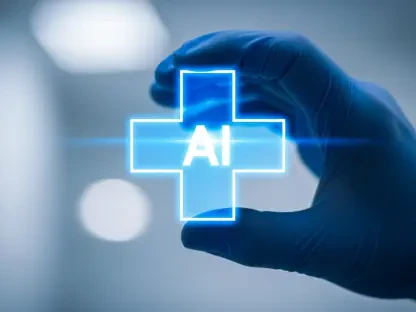In a world where healthcare systems grapple with escalating costs and diagnostic delays, consider the staggering reality that over $134 billion Canadian dollars are spent annually on blood tests globally, with North America alone conducting about 10.5 billion tests each year. This immense volume underscores a pressing need for innovation in diagnostics, where efficiency and accuracy are paramount. Enter AI-driven blood testing, a transformative technology poised to revolutionize how medical professionals interpret health data from a single blood sample, promising not only cost savings but also enhanced patient care through precision and speed.
Core Principles and Emergence
AI-driven blood testing leverages artificial intelligence to analyze a multitude of biomarkers—such as proteins, genes, and molecules—from just one blood sample. This approach stands in stark contrast to traditional methods that often require multiple tests to assess various health indicators, leading to increased time and expense. By consolidating these assessments, the technology offers a streamlined path to detailed health insights, marking a significant leap forward in diagnostic capabilities.
The emergence of this technology addresses longstanding inefficiencies in conventional blood testing, which can be both cumbersome and costly due to the sheer number of procedures involved. Developed as a response to these challenges, AI-driven testing aligns with the broader trend of integrating advanced tech solutions into healthcare, aiming to enhance precision and reduce the burden on medical systems. Its relevance lies in its potential to redefine how diagnoses are made, paving the way for faster and more targeted interventions.
Key Features and Performance Analysis
Biomarker Detection and Analysis
At the heart of AI-driven blood testing is its ability to detect and analyze hundreds of biomarkers in a single sample. Sophisticated AI algorithms sift through complex data to identify critical health indicators, providing specific insights into conditions like infections or treatment responses. This consolidation of multiple tests into one analysis not only saves time but also offers a comprehensive view of a patient’s health status, a feat unattainable by traditional means.
The significance of this feature cannot be overstated, as it reduces the need for repetitive testing and minimizes patient discomfort. Early implementations by innovators like Pareon Biosystems demonstrate promising accuracy, with the technology capable of delivering results that guide precise medical decisions. This capability positions it as a vital tool for modern diagnostics, particularly in high-stakes environments where every minute counts.
Integration and Operational Efficiency
Integrating AI-driven blood testing into existing healthcare frameworks, such as hospital labs and emergency departments, presents both opportunities and challenges. The technology is designed to sync with clinical systems, ensuring that results are accessible in real-time to medical staff. Performance metrics highlight impressive speed, often outpacing traditional testing methods, alongside accuracy rates that rival specialized research lab analyses.
Real-world testing efforts, spearheaded by entities like Hamilton Health Sciences and Pareon Biosystems, show encouraging outcomes in operational settings. For instance, in emergency triage scenarios, the rapid analysis of multiple biomarkers can prioritize patient care effectively. However, seamless integration requires overcoming technical hurdles, such as ensuring compatibility with diverse hospital infrastructures, a focus of ongoing development.
Recent Innovations and Scalability
The field of AI-driven blood testing has seen remarkable advancements in recent times, largely due to rapid progress in AI capabilities. What was once deemed unfeasible has now become a tangible reality, with systems able to process intricate biomarker data at unprecedented scales. This evolution reflects a broader tech trend toward harnessing machine learning for complex medical applications.
Emerging initiatives focus on scalability, moving from smaller biomarker groups to comprehensive panels that cover up to 200 markers in research phases. Collaborations, such as those between Hamilton Health Sciences and Pareon Biosystems, are driving this expansion, testing the technology’s limits in clinical environments. These efforts aim to balance diagnostic depth with practical applicability, ensuring the technology remains viable for widespread adoption.
A notable aspect of current innovation is the emphasis on cost efficiency without compromising quality. By targeting a manageable yet impactful number of biomarkers, developers are crafting a middle ground between expensive, research-grade tests and cheaper, less detailed traditional options. This strategic focus is set to redefine industry standards, with ongoing trials indicating robust potential for broader implementation over the next few years.
Practical Applications and Impact
In practical healthcare settings, AI-driven blood testing shines in scenarios requiring swift and accurate diagnostics, such as emergency departments. Here, a single sample analysis can expedite triage by identifying critical conditions instantly, enabling medical teams to act with precision. This application underscores the technology’s role in enhancing clinical outcomes under pressure.
Beyond emergencies, the technology holds promise for ongoing health monitoring, tracking infections, chronic illnesses, and treatment efficacy with greater detail. Its ability to provide personalized health insights can transform patient management, allowing for tailored therapeutic strategies. Industry impacts include potential reductions in diagnostic overheads, freeing up resources for other critical care areas.
Unique use cases are also emerging, such as deployment in clinical trials at hospital sites by innovators like Pareon Biosystems. These trials test the technology’s adaptability in real-world conditions, offering insights into its scalability and reliability across diverse patient populations. Such applications highlight the versatility of AI-driven testing, suggesting a future where diagnostics are both more accessible and profoundly data-rich.
Challenges and Barriers to Adoption
Despite its potential, AI-driven blood testing faces significant technical challenges, including ensuring consistent reliability across varied patient demographics. The complexity of analyzing extensive biomarker data demands robust algorithms that can adapt to individual differences, a hurdle that developers are actively addressing through iterative testing phases.
Logistical and regulatory barriers also loom large, with the need for clinical approval posing a substantial obstacle. Competing with established testing methods requires not only proving superior performance but also navigating market adoption challenges, where cost and familiarity often favor traditional approaches. These issues necessitate strategic partnerships and phased rollouts to build trust and demonstrate value.
Efforts to mitigate these limitations are underway, with a focus on incremental development and validation. By starting with smaller, controlled implementations and expanding based on proven results, innovators aim to refine the technology while addressing regulatory concerns. This cautious approach, while time-intensive, is crucial for ensuring long-term success in a competitive healthcare landscape.
Looking Ahead: Future Potential
The future of AI-driven blood testing appears bright, with predictions pointing toward expanded biomarker panels that cover an even wider array of health indicators. As AI algorithms grow more sophisticated, the technology could become a cornerstone of clinical diagnostics, setting new benchmarks for accuracy and efficiency. Broader adoption across global healthcare systems seems likely within the coming years, from 2025 to 2029, as scalability improves.
Potential breakthroughs include establishing this technology as the gold standard for blood testing, fundamentally altering how diagnoses are approached. Long-term impacts could see significant reductions in global healthcare costs, alongside improved patient outcomes through personalized care. Moreover, success in this arena may inspire further AI applications in medicine, catalyzing innovation across various domains.
Reflecting on systemic implications, the technology’s ability to address both financial and clinical challenges could reshape resource allocation in healthcare. If barriers are overcome, the ripple effects might extend to policy changes, prioritizing tech-driven solutions in medical funding. This forward-looking perspective underscores the transformative power of AI in tackling some of healthcare’s most persistent issues.
Final Thoughts and Next Steps
Looking back, the exploration of AI-driven blood testing revealed a technology that stood out for its innovative approach to diagnostics, marked by impressive capabilities in biomarker analysis and integration with clinical systems. Supported by pioneering work from leaders like Dr. Guillaume Paré and Pareon Biosystems, alongside recognition through initiatives like the DRIVE Spark grant from Hamilton Health Sciences, the journey showcased a blend of ambition and pragmatism in addressing healthcare inefficiencies.
Moving forward, the focus should shift to actionable strategies for overcoming existing challenges, such as accelerating regulatory approvals through collaborative frameworks between innovators and health authorities. Investment in pilot programs at diverse medical facilities can further validate the technology’s effectiveness, building a case for widespread adoption. Additionally, fostering public-private partnerships could unlock resources needed to scale this solution, ensuring that cost savings and improved patient care become a reality for healthcare systems worldwide.









